The Hirsch Truth: Episode 7
Ann takes on generative art, reviewing projects by Kim Asendorf, Eric Hu, Anna Lucia, and others.
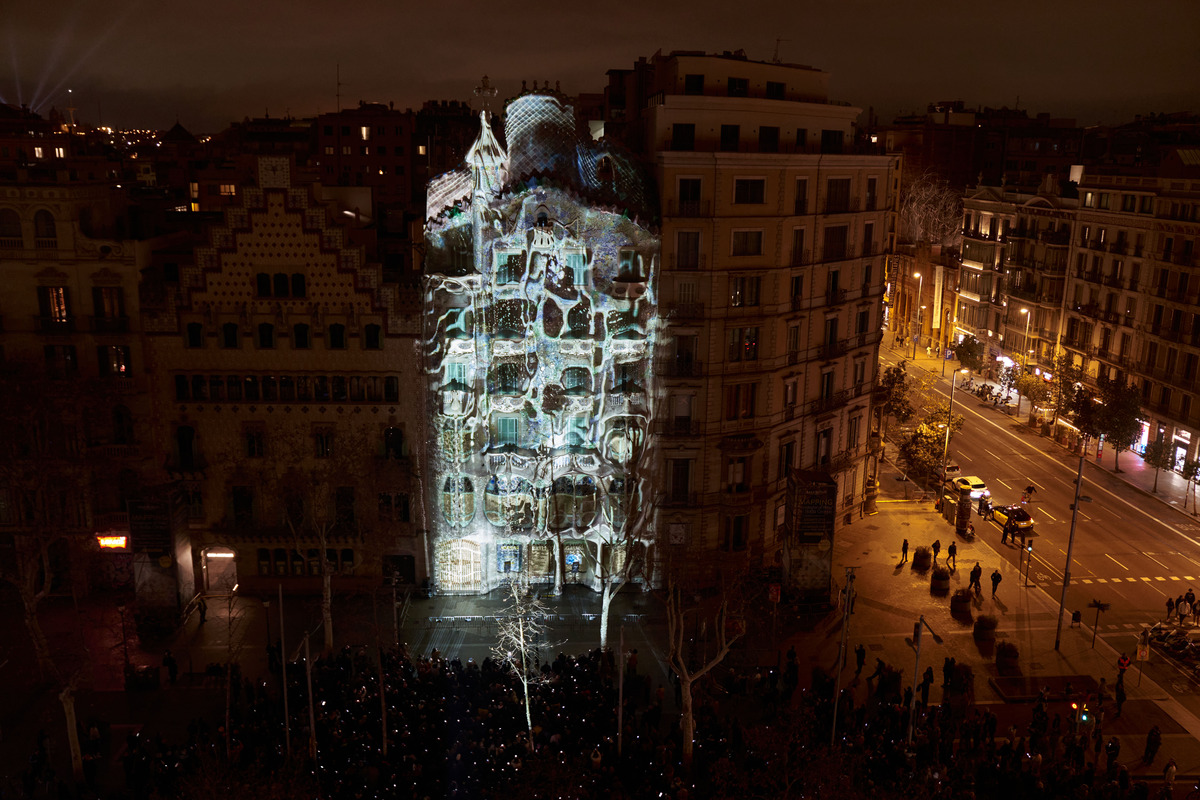
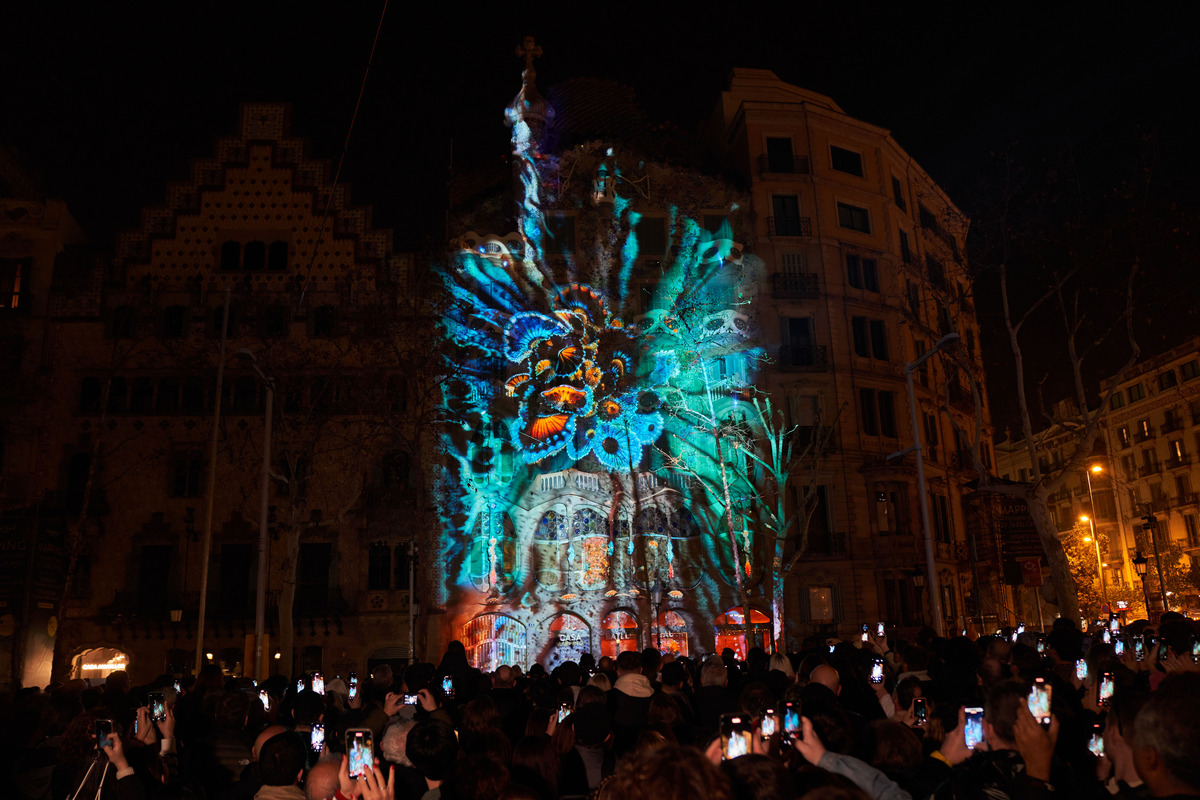
Shortly before 9PM on the last Saturday of January, the crowds started gathering outside Casa Batlló—one of the best-known buildings in Barcelona, thanks to its flamboyant, proto-surrealist remodeling in the early twentieth century by the great Catalan architect Antoni Gaudí. Stretches of road at the busy intersection where the building is located had been closed off to make more space. The hordes of people were gathered for the debut of Sofia Crespo’s Structures of Being, an artwork specially commissioned to be projection-mapped on Casa Batlló’s facade. Smartphones on camera mode were at the ready as the countdown clock appeared. At the strike of the hour, the mapping began. It lasted for ten minutes: a dazzling sequence of continuously morphing images, set against a recorded soundtrack of organ and strings furnished by composer Robert M. Thomas. One moment light blue waves rippled across the facade, its multicolored mosaics of broken ceramic tiles still visible beneath. Seconds later the entire structure—sandstone, glass, cast iron, roof fashioned from tiles in the shape of a dragon—seemed to melt away, subsumed by powerful swirling currents. At other points, specimens of flora and fauna appeared: eels, birds, trees, flowers. It was almost impossible to take everything in. But if you wanted you could watch it again. The whole show repeated at half-hour intervals until 10:30PM—and again the following night. A livestream recording of the event is also now available online.
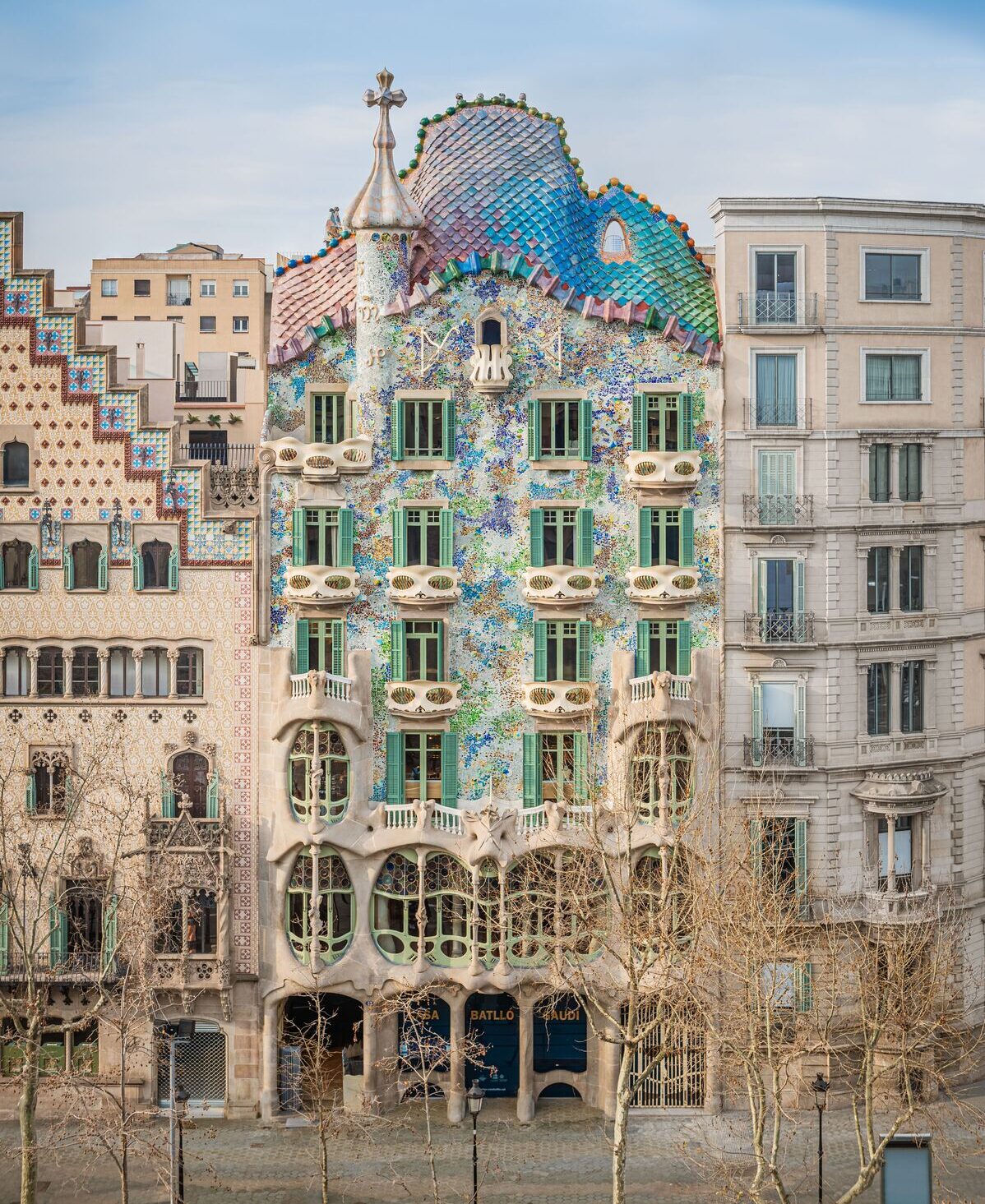
Crespo was brought in by Casa Batlló as its second artist-in-residence in a program entitled “The Heritage of Tomorrow,” which commissions new work that explores and extends Gaudí’s architectural legacy. The first artist-in-residence was Refik Anadol, who presented a similarly popular projection mapping on the facade of the building in 2022 and again for an encore in 2023. (There is also a work by Anadol permanently installed on a six-sided LED cube in the basement of the building.) Anadol and Crespo are both artists whose work involves the training of neural networks on large datasets of images. For Living Architecture: Casa Batlló, Anadol used a dataset that included original Gaudí sketches as well as photos of the building posted on social media, which he combined with climate data from Barcelona recorded in real time to create a sequence of constantly shifting abstract forms and patterns in an array of colors. The dataset in Structures of Being, meanwhile, is based on Crespo’s research into the famously biomimetic architecture found in Casa Batlló—both the exterior, with its curved lines and scaly roof, and the equally fantastical interiors—and other key works by Gaudí. “The fact that [Gaudí]’s using architecture as a way of connecting with the natural world,” said Crespo in a video about the making of Structures of Being, “in a way I see a parallel with what I’m doing.” But the parallels don’t end there.
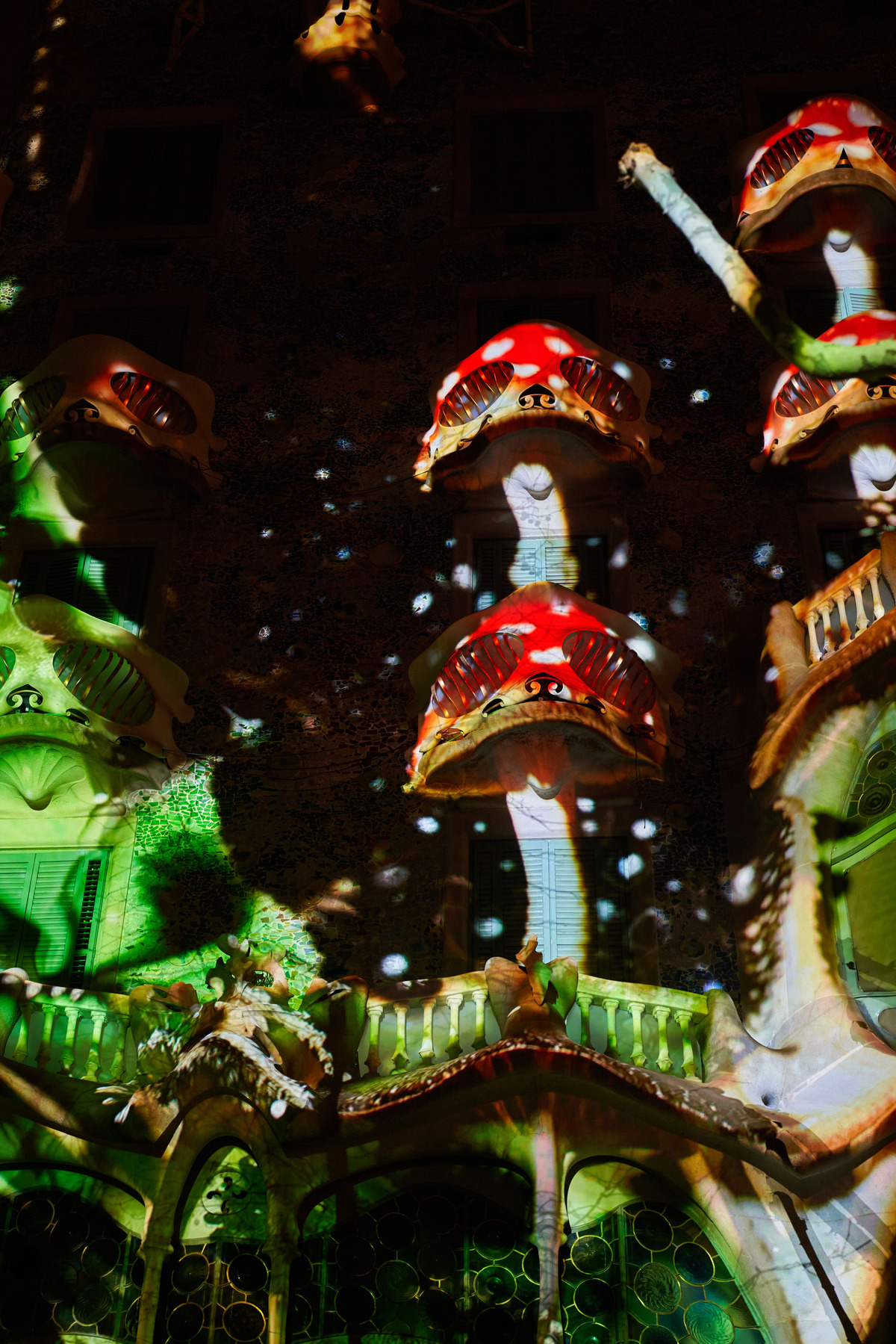
Like the building to which it pays homage, Structures of Being is densely packed with intricately wrought detail, resulting in an aesthetic experience that can be quite overwhelming. When we spoke, Crespo described the process of making the work as an act of “collage.” The dataset on which she and her creative partner, Feileacan McCormick, trained their neural network was composed of a selection of open-source photographs of the natural phenomena which appear throughout Gaudí’s work. But then rather than allowing the neural network to randomly generate a sequence of images, Crespo and McCormick fed in certain inputs including 3D scans of Casa Batlló, which meant that the form of the building guided the outputs. My favorite example of this was when the curved balconies on the facade were lit up red and white like toadstool mushrooms. The AI-generated images were then layered with other digital material from a variety of sources. These integrate seamlessly, so you wouldn’t notice them unless they were pointed out to you. At a reception after the presentation on the Sunday evening, Crespo took out her phone and pulled up the Instagram account of a generative artist called Arsiliath, whose feed included a familiar image of a jellyfish-like creature, produced using a program called a compute shader. Crespo joked that she had approached the making of Structures of Being in the spirit of Gaudí’s insistence that an artist must “torture” their materials, putting them through an intensive process of physical transformation.
Like the building to which it pays homage, Structures of Being is densely packed with intricately wrought detail.
Being an architect, Gaudí relied heavily on the skills and labor of others when designing and building his work. Similarly, although Crespo’s is the name on the poster, Structures of Being is a collaborative enterprise. It is difficult to imagine the experience of watching the projection mapping without the audio accompaniment, a stirring piece composed using handcrafted algorithms that culminates in a single, reverberating organ chord. (Thomas suggested that you could interpret this moment in the score as signifying the sudden end to Gaudí’s life and art when he was hit by a tram at the age of seventy-three, on the way to the construction site of the Sagrada Família.) Another less immediately obvious but conceptually significant collaboration in Structures of Being was Crespo’s partnership with the Barcelona Supercomputing Center. The center contributed data from high-resolution models of ocean circulation being produced as part of a scientific project entitled Destination Earth. The goal of the project is to create a so-called “digital twin”—a virtual replica of this planet that will enable accurate predictions of the effects of climate change. Clips of 3D visualizations from this model were collaged into Structures of Being. By incorporating these technologically advanced simulations of the ocean’s currents and eddies into her work, Crespo came closer to a perfect depiction of nature than Gaudí could have ever dreamed was possible.
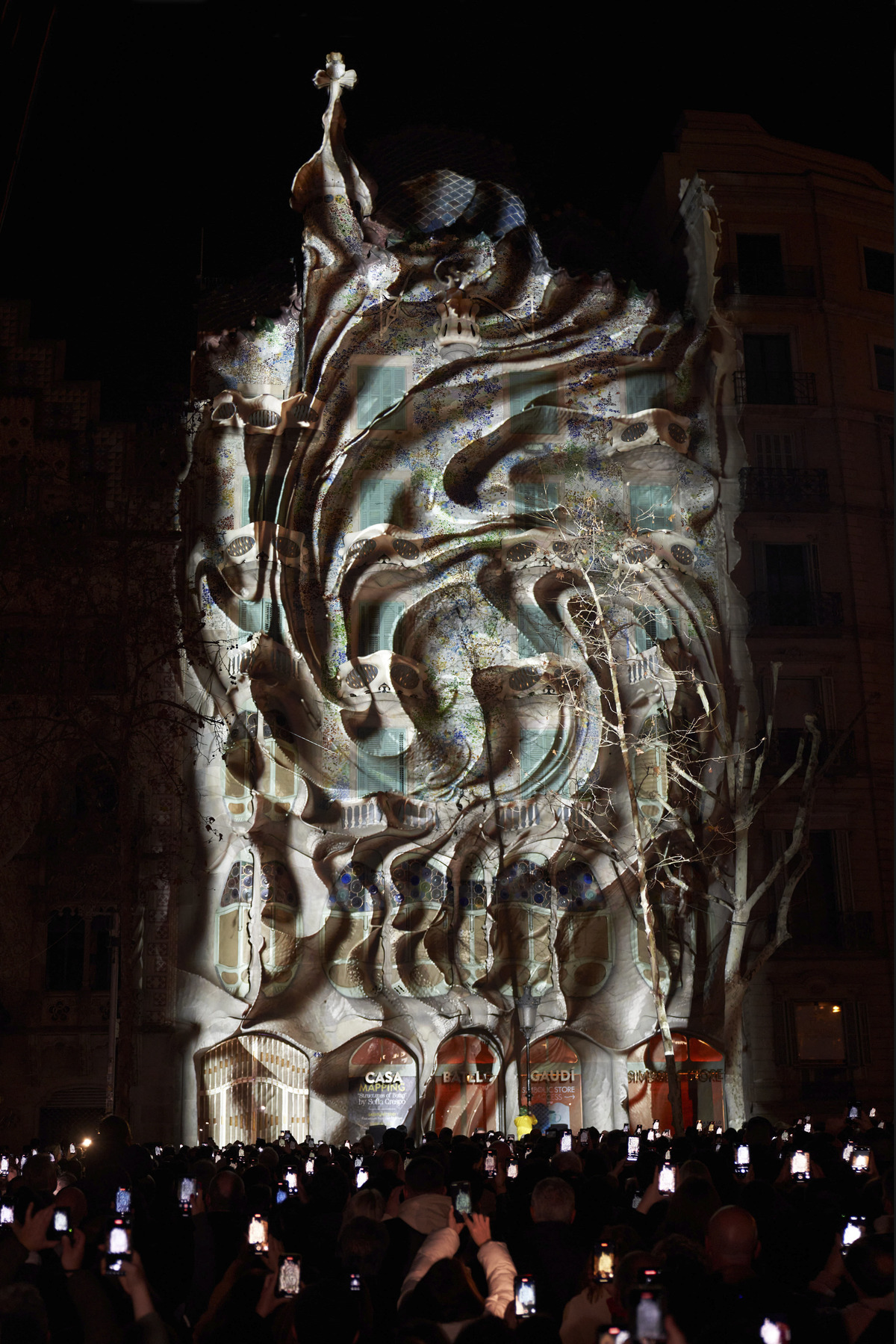
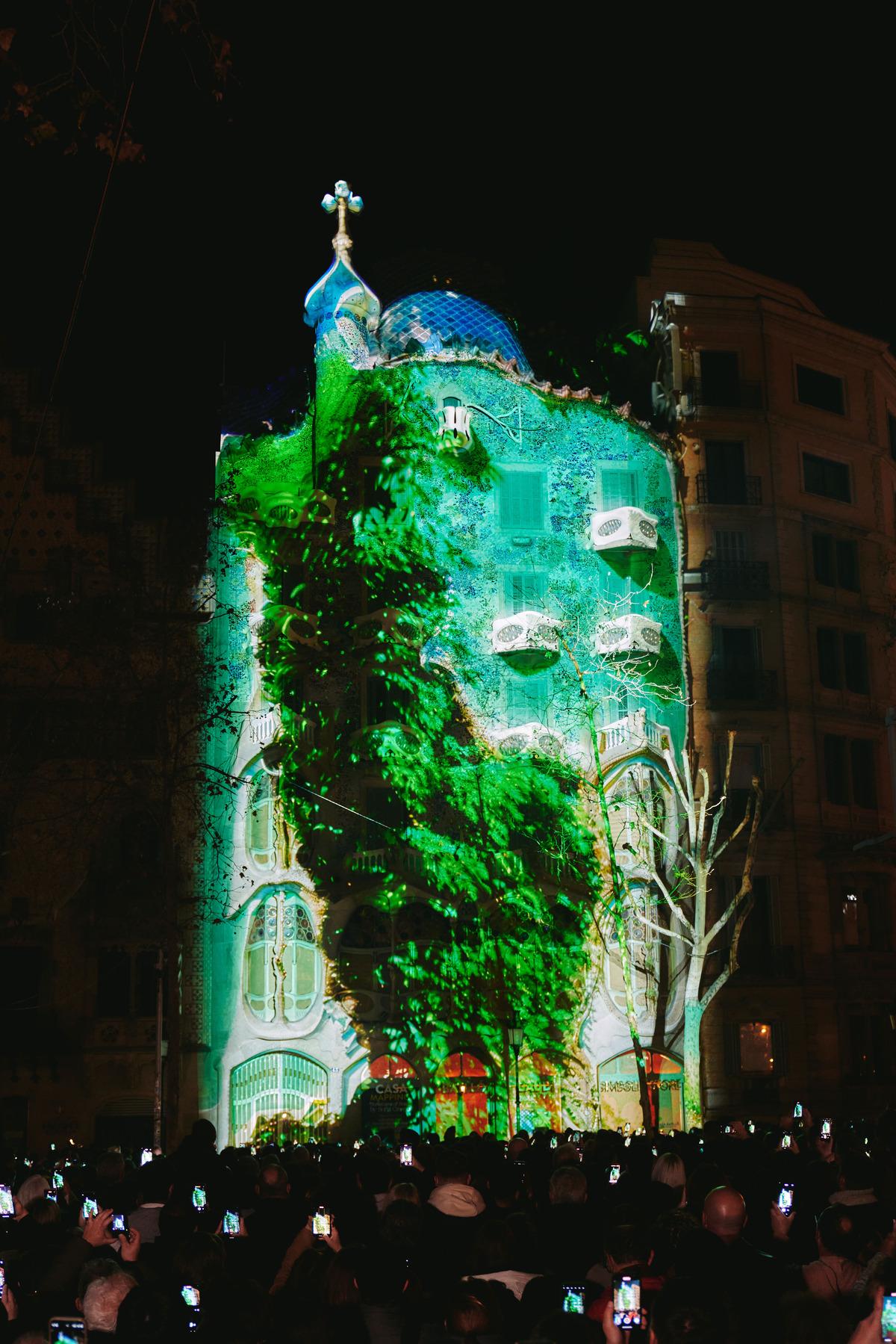
Yet the notion of a virtual replica would not have been entirely alien to Gaudí. At some point in his career, he developed an innovative system of hanging models to help design his buildings. These upside-down scale models were fashioned from a system of strings weighted with sacks of bird shot. The forces of gravity meant that the suspended strings would naturally form catenary curves—which, when inverted, would become the architectural arches in Gaudí’s buildings. This could be done by placing a mirror beneath the model, or photographing it and then flipping the image around. Commentators have since observed that this system was in, effect, a generative model akin to the parametric design software used by architects today. By adjusting the length of one string, Gaudí would set off an automatic process that “updated” the entire model. As Andrew Liebchen, an architect turned product designer writes, “This model is generative because Gaudí [chose] the placement of the strings and the weights, but ‘gave up’ the final control of his building’s form to material logic.”
The notion of a virtual replica would not have been entirely alien to Gaudí.
For Gaudí, who became increasingly religious throughout his life, a primary purpose of his architectural career was to celebrate God’s creation—hence the forms of the natural world are so abundant across his sites. “The great book, always open and which we should make an effort to read,” he once said, “is that of Nature.” (The scaly dragon that sits atop Casa Batlló is a reference to the Christian legend of Saint George and the dragon.) I hope it doesn’t sound too sacrilegious to point out that in Structures of Being the creator being celebrated is Gaudí himself. What makes Crespo’s intervention so instructive is that it encapsulates some of the essential qualities of the architect’s work—not only the connection with nature but also the maximalist visual language that he employed and the technologically complex systems that he implemented. After watching the projection mapping for the final time, I realized that I wanted to go back inside Casa Batlló, to revisit all the details which had been drawn out in Structures of Being. If many of the other spectators felt the same way, they might do well to start queuing for tickets—it was announced after the event that, across the two nights, a total of 95,000 people came to view the projection mapping. Much like Gaudí again, Crespo proved successful in attracting crowds.
Gabrielle Schwarz is deputy editor of Outland.
